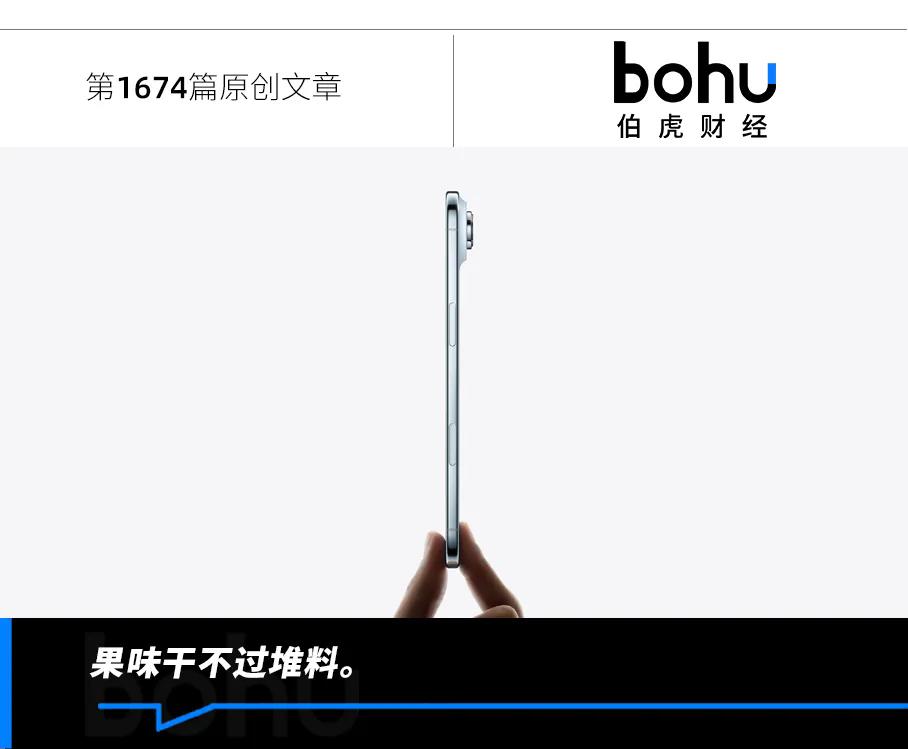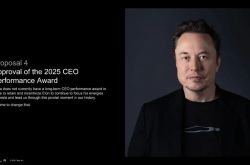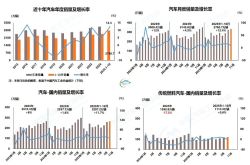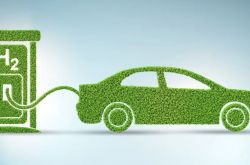Apple: No Longer the Unrivaled Icon
![]() 11/14 2025
11/14 2025
![]() 385
385

Source | Bohu Finance (bohuFN)
As expected, Apple has once again raked in staggering profits.
According to the financial report for the fourth quarter of its fiscal year 2025, released a few days ago, Apple reported revenue of $102.466 billion during this period. This marks an 8% year-on-year increase and sets a new record for fourth-quarter revenue, surpassing the $100 billion mark. The net profit for the quarter reached $27.466 billion, a substantial 86% rise from the $14.736 billion recorded in the same period last year.
Despite persistent market pessimism and doom-and-gloom predictions about Apple, its performance in fiscal year 2025 has been nothing short of impressive. In 2021, Apple's annual revenue just crossed the $300 billion threshold, with a net profit of $94.68 billion. By fiscal year 2025, its total revenue soared to $416.161 billion, while net profit skyrocketed to an astonishing $112.01 billion.
However, this is far from Apple's upper limit. Traditionally, following the disclosure of its financial reports, Apple's stock price tends to experience a slight dip. This time, however, it quickly rebounded. The main reason is that Apple set exceedingly high expectations—CEO Tim Cook estimated that the next quarter would be Apple's highest-ever in terms of both revenue and iPhone sales.
Yet, a more profitable Apple does not necessarily equate to a better Apple.
01 The Golden Era of Apple
Apple's business is primarily divided into two major segments: hardware and software. The hardware division shoulders the heavy responsibility of driving revenue scale, while the high-margin software business focuses on effortless profitability. Therefore, the ideal state for Apple is to sell an increasing number of high-priced hardware products, including iPhones, continuously expand its user base within the Apple ecosystem, and thereby steadily boost software revenue.
To some extent, one could argue that the current Apple is in its best state.
In terms of the hardware business, during the fourth fiscal quarter, Apple generated $49 billion in revenue from its iPhone segment, marking a 6.1% year-on-year increase. From a shipment perspective, IDC data reveals that in the third quarter of 2025, Apple ranked second globally with 58.6 million units shipped, capturing an 18.2% market share and achieving a 2.9% year-on-year increase, outpacing the overall market growth of 2.6%. In terms of average selling price, Dolphin Investment Research estimates that the average selling price of iPhones this quarter was around $837, a 1.4% year-on-year increase.
Among hardware products other than the iPhone, Mac business shipments also showed promising growth. In the third quarter of this year, the global PC market shipments increased by 10.3% year-on-year, while Mac shipments surged by 28.3%. The iPad business maintained its performance despite a high base from the previous year. Meanwhile, other hardware businesses, such as wearables, saw a 0.3% year-on-year decline, essentially halting the downward trend observed in the past nine quarters.
The simultaneous increase in both volume and price of the hardware business has not only boosted revenue performance but also strengthened Apple's barriers in the software business.
Leveraging its vast user base and loyal customer group, Apple mandates ecosystem developers to use the App Store and charges a fixed 30% commission on app sales and in-app purchases. This model has faced numerous opponents, including game developers like Epic Games and some government agencies in certain countries and regions. In October of this year, an accusation against Apple, led by British scholar Rachel Kent, reached a conclusion. The arbitration tribunal ruled that Apple's behavior constituted abuse of market dominance. Apple promptly announced its plan to appeal the decision. These objections have forced Apple to make some concessions, such as in the United States, where the App Store is now required to allow foreign developers to add external payment links.
However, in the fourth fiscal quarter, Apple's software service revenue reached $28.8 billion, exceeding market expectations and showing a 15.1% year-on-year increase. This largely demonstrates the stickiness of the user base within the Apple ecosystem.
Meanwhile, the five-year antitrust lawsuit between Google and Epic Games has also seen new developments. Both parties have submitted a proposed settlement to a U.S. court, and if approved, this protracted litigation will come to an end. According to a tweet by Sameer Samat, head of the Google Android ecosystem, the core of the settlement is to provide developers with more choices, reduce service fees, and introduce more competition while maintaining security. Clearly, while manufacturers can oppose exclusionary agreements with monopolistic properties, it does not prevent Google from continuing to profit from its ecosystem barriers.
Google serves as an analogous case. In the fourth fiscal quarter, the software business, accounting for 28% of revenue this quarter, generated 45% of Apple's gross profit. With the hardware business continuing to perform well, Apple's money-printing machine will only become more stable.
02 Another Crossroads
The main reason Cook dared to set such high expectations is largely due to the exceptional sales of the iPhone 17 series. According to Counterpoint Research, the first 10-day sales of the iPhone 17 series in China and the United States after launch increased by 14% compared to the iPhone 16 series.
However, the iPhone 17 series is not a product with a strong "Apple flavor." To summarize the biggest feature of Apple's update this time in one word, it would be "more for less"—giving customers everything possible without raising prices.
Apple's approach to standard models has long been a subject of criticism. For example, the iPhone 14 series introduced the "Dynamic Island" and an always-on display, features that were long overdue. However, only the iPhone 14 Pro series could access the Dynamic Island. The iPhone 15 standard model inherited some features from the previous Pro model, such as the A16 chip and Dynamic Island functionality, but it also clearly "cut" key configurations like a 120Hz high-refresh-rate screen and a telephoto lens.
In contrast, the iPhone 17 standard model can be considered the most cost-effective standard iPhone ever. Although it does not feature a new motherboard architecture, it boasts the latest A19 chip, the same screen as the Pro model, a dual-camera setup with a 48-megapixel main camera and a 12-megapixel 2x telephoto lens, an upgraded 18-megapixel front camera, and even a 120Hz high refresh rate.
To continue benefiting from China's consumer subsidies, Apple even temporarily abandoned its globally unified pricing strategy. For the same 256GB storage version, the Hong Kong version of the iPhone 17 standard model costs HK$6,899, while the mainland version costs only RMB 5,999, falling within the subsidy range.
In contrast, the iPhone Air is a product with a stronger "Apple flavor."
When Apple introduced the first iPhone, Steve Jobs famously asked, "Today, we are introducing three revolutionary products. The first is a widescreen iPod with touch controls. The second is a revolutionary mobile phone. The third is a breakthrough internet communications device. What are these three products?" He then revealed the answer: "They are not three separate devices but one device. And we call it the iPhone."
This ability to explore better experiences and tell compelling stories was a core characteristic of Apple during the Jobs era and even in the early years under Cook.
The iPhone Air model better showcases Apple's exploration of the future, such as its completely new design from the inside out.
To ensure the strength of its ultra-thin body, the iPhone Air is the only one among this year's three new models to use titanium metal. To fit essential components into a thinner body, Apple redesigned the component layout, removed the bottom speaker, moved the front camera module downward, and created a motherboard weighing less than 10 grams yet capable of A19 Pro-level computing power.
However, despite being a very Apple-style product, the iPhone Air did not achieve good results. According to reports, the first generation of the iPhone Air sold only over 100,000 units domestically after 12 days of activation, far below internal expectations. In comparison, the iPhone 17 series sold 1.5 million units in its first week and exceeded 9 million units in total after 50 days of sales, 150% of the previous generation's sales.
Ultra-thin flagship phones are indeed a challenging niche category with too many aspects to balance. However, the market's response also highlights a problem. In the past, Apple had a magical ability to guide aesthetics, trends, and even consumer demand, but now it is heading toward another crossroads.
03 In Conclusion
Whenever inevitably compared to his predecessor, Steve Jobs, Cook is often criticized for failing to deliver products comparable to those of Jobs.
Strictly speaking, this accusation is somewhat unfair. Whether it is the tremendous success of wearable products or the launch of the Apple Vision Pro, both demonstrate Apple's exploration of cutting-edge experiences during the Cook era. As a professional manager, Cook has undoubtedly been successful. When he first took over Apple in 2011, its market value was approximately $300 billion, whereas as of this writing, Apple's market value has reached a massive $4 trillion.
However, another indisputable fact is that the pioneering, avant-garde, and premium Apple that fans once admired may be disappearing. They no longer blindly believe in Apple's product narratives and instead embrace more practical specifications. This is a result of Apple's overly cautious product and strategic approach in recent years.
The good news is that as a stable tech giant, Apple still has many opportunities to play its cards.
According to predictions by renowned Apple analyst Mark Gurman, Apple is preparing for a major move in 2026. In early 2026, Apple will introduce a series of new products, including traditional offerings like the more affordable iPhone 17e, an entry-level iPad equipped with the A18 chip, and an iPad Air with the M4 processor, as well as new products like the first smart display and a foldable iPhone. Meanwhile, AI and smart glasses, which are drawing more attention, are also in progress.
Whether Apple can rise to greatness again may become apparent next year.
Reference Sources:
1. Tech Difference: After Dismantling the iPhone Air, I Believe Apple Still Has Some Tricks Left
2. Dolphin Investment Research: Apple: iPhone Holds Steady as the Centerpiece, When Will AI Reveal Its True Colors?
The cover image and accompanying illustrations of the article are owned by their respective copyright holders. If the copyright owners believe that their works are not suitable for public browsing or should not be used free of charge, please contact us promptly, and our platform will make immediate corrections.








